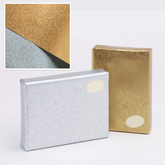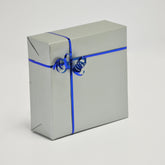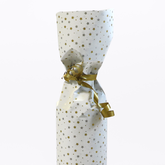What you NEED to know about the future of Packaging: Using Bamboo and Sugarcane

Bamboo and Sugarcane fibres are a cheap and eco-friendly alternative to many of the plastic and paper-based products currently used in packaging, and offer a viable solution for ecommerce businesses wanting to improve the sustainability profile of their product packaging in 2023. Let’s look at the essential facts you need to know about each of these amazing materials.
What is Bamboo?
Bamboo is more than just a beautiful, tall grass that adorns home gardens and landscapes. s an eco-friendly packaging material, it has become increasingly popular in commercial industries as a sustainable option for everything from eco-tissue paper to gift boxes. As a durable, lightweight material, bamboo is versatile and easy to work with, and also quickly breaks down when discarded instead of sitting in landfills indefinitely.
Not only this, but bamboo is extremely prolific and grows exceptionally quickly, making it cost-effective to cultivate and harvest on a large scale. Bamboo is becoming the go-to eco-friendly choice for many products and is changing the way that UK ecommerce businesses package their goods.
How is Bamboo used for packaging?
Its natural strength and durability allows bamboo to keep products secure and protected during shipping or transport – suiting it to a wide variety of packaging applications. Bamboo’s lightweight nature also helps keep shipping costs low while reducing greenhouse gas emissions from transport. Plus, since bamboo is easily compostable, eco-savvy customers have the satisfaction of knowing their packages will not contribute to environmental waste and can even be safely disposed of in their garden compost bin!
From a packaging design perspective, bamboo is a highly customisable and versatile substrate, allowing marketing and design teams to create beautiful and unique eco-gift wrap and packaging products that are sure to turn heads and add elegance to any consumer item. For eco-conscious ecommerce businesses looking for a reliable green packaging solution for eco-gift wrap, tissue paper, and other products, switching to bamboo is one of the cheapest and most sustainable options available today.
What is Sugarcane?
Sugarcane is a fast growing and renewable grass crop that is mostly farmed to produce processed sugar, as well as ethanol for the alcoholic drinks sector, and even for eco-friendly packaging materials. Sugarcane cultivation plays a central role in various countries' agricultural economies because it requires less maintenance and water compared to other crops, allowing it to be produced cheaply in vast quantities.
In terms of eco-friendly packaging specifically, sugarcane has been identified as having great potential to replace plastic protective packaging materials due to its affordability, eco credentials and structural resilience. Many packaging designers have already taken advantage of this by producing biodegradable ‘paper’ made from sugarcane fibre, which can be used in place of traditional tissue paper to provide protection and decoration for ecommerce goods.
How is Sugarcane used for Eco-friendly packaging?
For conversion into eco-friendly packaging products, the sugarcane is first harvested and converted into stringy fibres. These versatile fibres can then be processed into a wide range of paper substitutes and other flexible materials – including wrapping paper, as well as more durable containers and boxes for gift products. The use of sugarcane not only decreases plastic usage in packaging but also helps improve soil health as it decomposes, making it gentler on the environment than many alternatives. Sugarcane is an excellent replacement for both oil-based plastics and paper-based substrates, and can be recycled or composted easily after use, reducing the environmental footprint of packaging products.
Discover the future of eco-friendly packaging
At Kudos Giftwrap, we are extremely interested in bamboo and sugarcane as part of the future of eco-friendly packaging, due to their potential to replace so many harmful products currently used in non-sustainable packaging. To find out more about sustainable packaging design and how your business can benefit, please click here to claim a free copy of our new Sustainable Packaging Guide.
Image Source: Pexels






